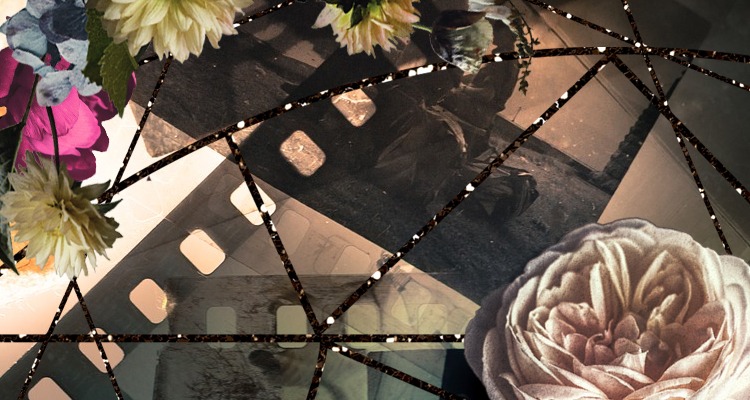How to legally use photos on a website
I stumbled across some old scrapbooks from my ‘youf’ the other day. They were chockful of pictures from Jackie and Look-In magazines. Every mention of Dempsey And Makepeace, Robin Of Sherwood and Press Gang was carefully cut out and glued. There’s even one dedicated to Blackadder. How the internet has changed things.
However tempting though it is to do a quick Google and illustrate this blog with Stephen Fry and his General Melchett moustache, I have resisted. Why? Because it would be theft. Theft from a photographer who, like me, is trying to make a living.
“Oh, no one cares if you use an image”
Not to get too pantomime, but oh yes they do! Photographers now use sophisticated software which can track down where their image is used online. More and more are pursuing companies for image copyright compensation.
At a networking event near York, I heard first-hand of someone’s tussle with a legal firm over a photo. They were being sued for £3,000 by a law firm from Switzerland for copyright infringement.
Q. So who owns the image copyright?
Is it:
a) The photographer?
b) You, if you buy the licence to use it?
Answer: a). It’s always the photographer. Forever.
What you pay the photographer for is the permission to use their image. When I worked at the Lake District National Park, we would commission photoshoots. For these photos we would have to pay extra for the right to use these photos forever. The fancy term was “in perpetuity”. However we would still check with the photographer as a courtesy. A quick phone call or email helps keep them on side and you out of the dock.
For a full run-down on legalities, check out Getty Images explanation called Copyright and You.
“But I don’t use images”
Really? Not in:
- social media posts?
- blog post illustrations?
If not, you’re missing out on a great way to grab your audience’s attention. Images are great, just make sure they’re legal. Here’s how to legally use photos on a website:
Free image sources
Friends and family
Think creatively. Use images where you own the copyright, or have been granted permission. This can include your own photos or those sourced from friends.
I adapted this blog image for my article on How to use Twitter hashtags from a holiday image:
Apps to change images and add text
There are some amazing free apps. I often take photos on my phone to use in tweets. To add text, I use Phonto on my Android phone. Plus there are lots of alternatives for the Mac.
Public domain
Images in the public domain refers to content not owned or controlled by anyone. Or it may have been released for public use. Try:
Free image libraries
Getty Images offers a free Embed option of some seriously brilliant photos
My favourite
Canva is a fantastically easy-to-use drag and drop online graphics software. This includes a photo library.
There’s a free Basic package, with access to a selection of photos. Tip: If you upgrade to the Pro version like I have, you get more choice.
Warning
I used to use Pixabay and Unsplash. Until I heard stories of some unscrupulous photographers withdrawing images and then asking for payment.
If you do use images, make sure you record the date you saved the image from the websites, and take a screenshot of the image on that website.
Buying stock images
Ultimately, you may have to pay to get what you want. This means buying stock images.
What are stock images?
Stock images are called this as they’re always in stock. Photographers take them and then make them available to buy.
You can buy them from photography websites such as Getty Images or Shutterstock. There are two types of photos:
Royalty-free
You can use these for nearly unlimited use when you purchase a licence. Usually it stops short of your being allowed to use the image on merchandise, like a mug. But for brochures or websites, they’re fine.
Rights-managed
These are best used for one-off publications as limitations are so restrictive. For example, using it as a brochure cover for distribution in the UK only for the next six months. It can get even more specific. Unless you’re really good at keeping track of timings, I’d recommend royalty-free.
Photoshoots
The ultimate solution to how to legally use photos on a website is to book a commercial photoshoot. There are lots of valid reasons why it makes good business sense as:
- it might actually work out cheaper than buying stock images
- it looks more professional to show you or your premises. Tip: to make sure they can be used in the future, don’t show specific team members who may move on.
- you’ll have more control over the look and feel of the photos
- you can build up your own stock library which can be used in brochures, leaflets and other promotional material
- the photos will be exclusive to you so you won’t see them used elsewhere
Find out how to get the most out of your Lifestyle business photoshoot, where I interviewed a photographer and a magazine editor.
Images sorted? Tick. Now what about those words?
Do you need some Google-friendly web content? Maybe some pre-written tailored social media posts? As a copywriter with 20 years’ experience, I can help. Based in York, I work with clients across the UK. Please get in touch for a no-obligation chat.


